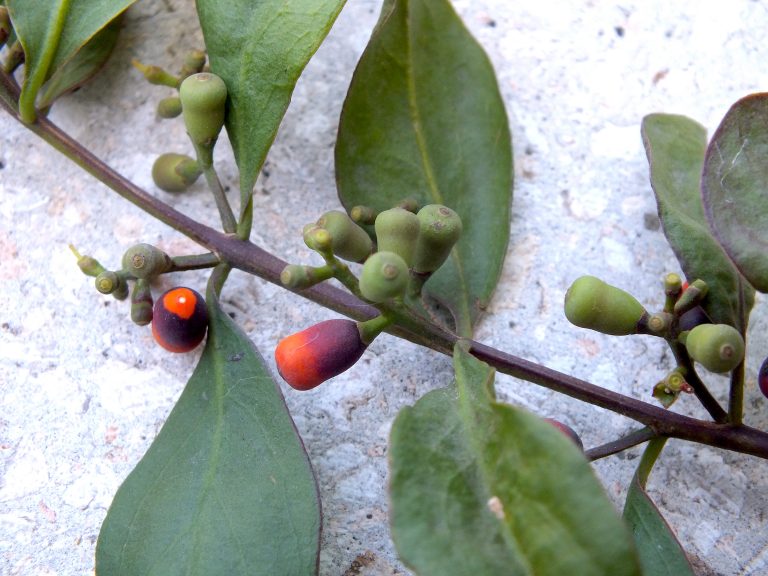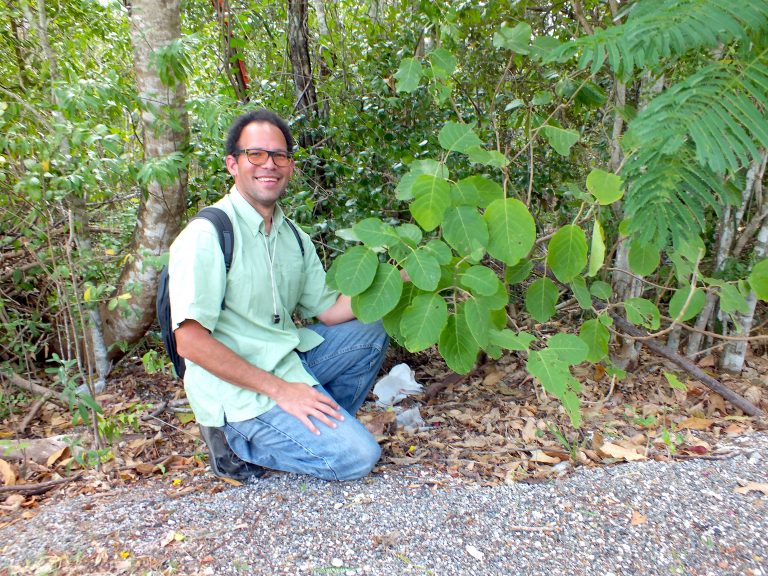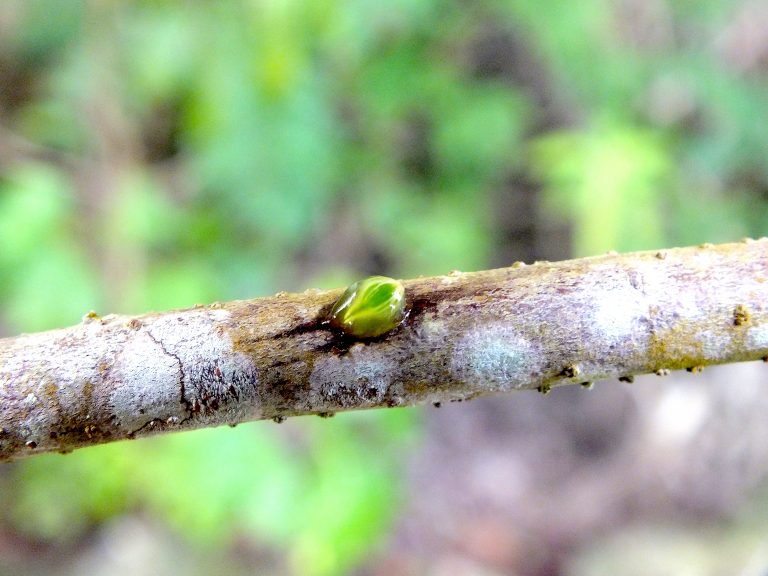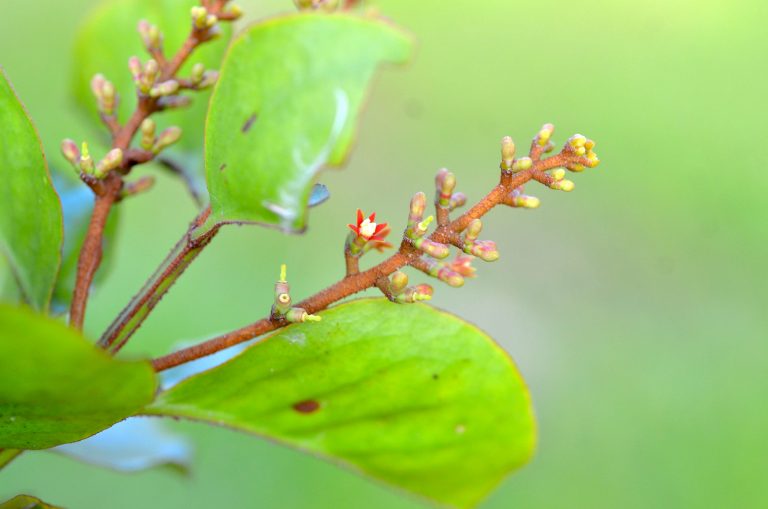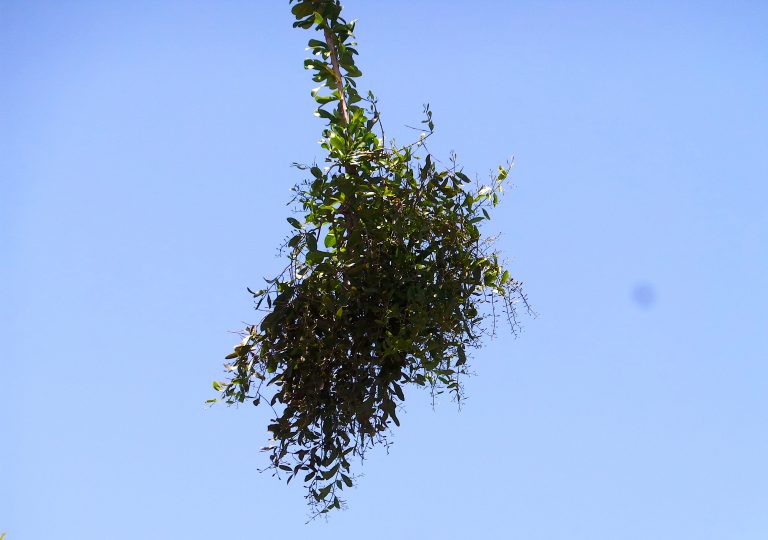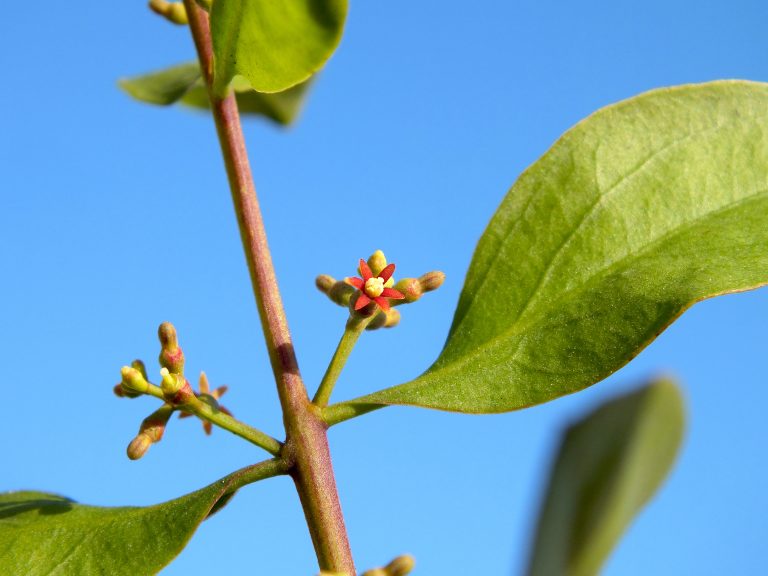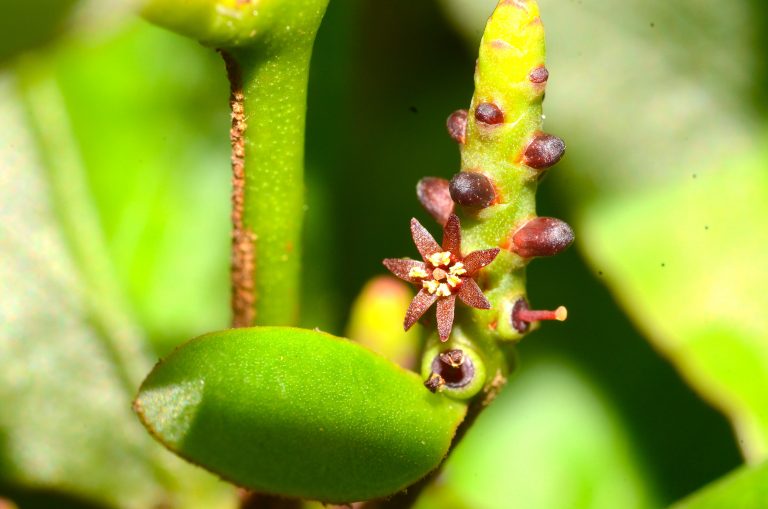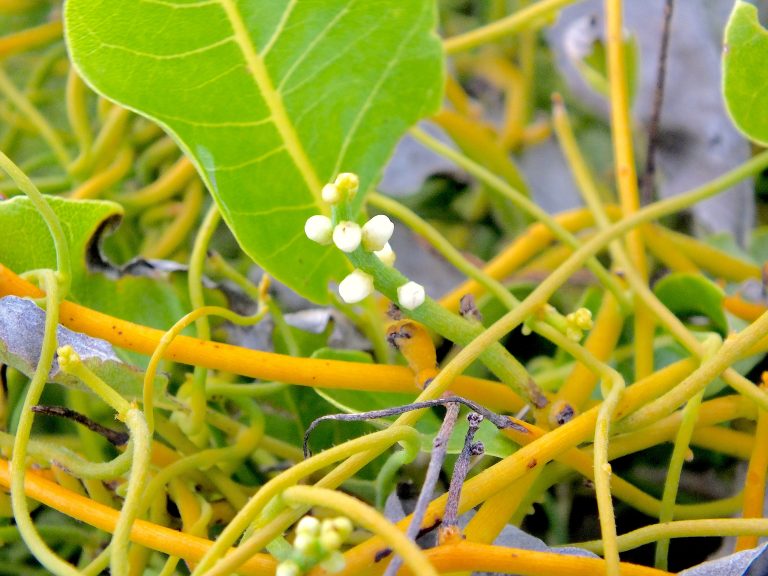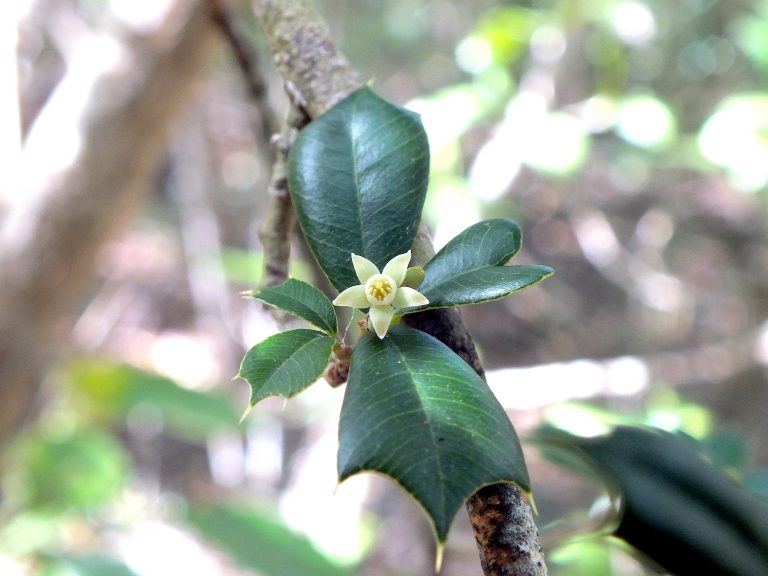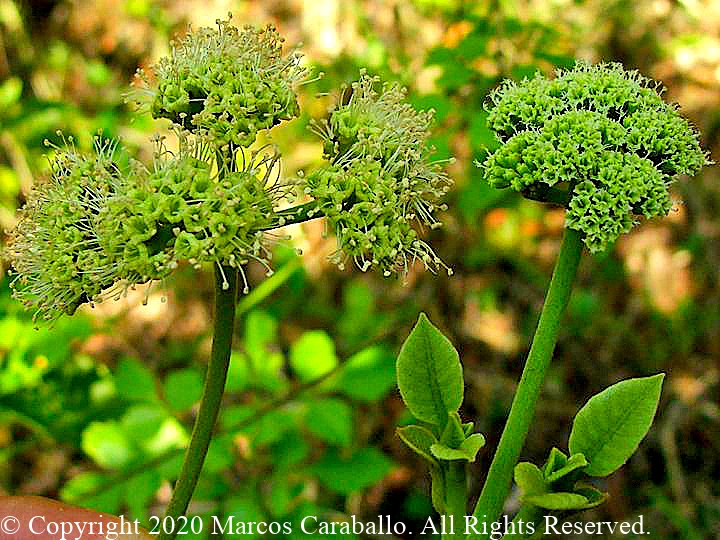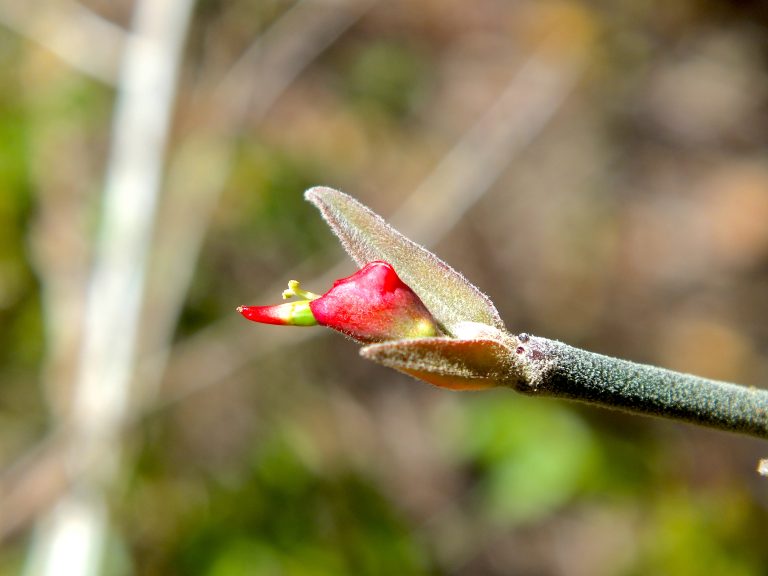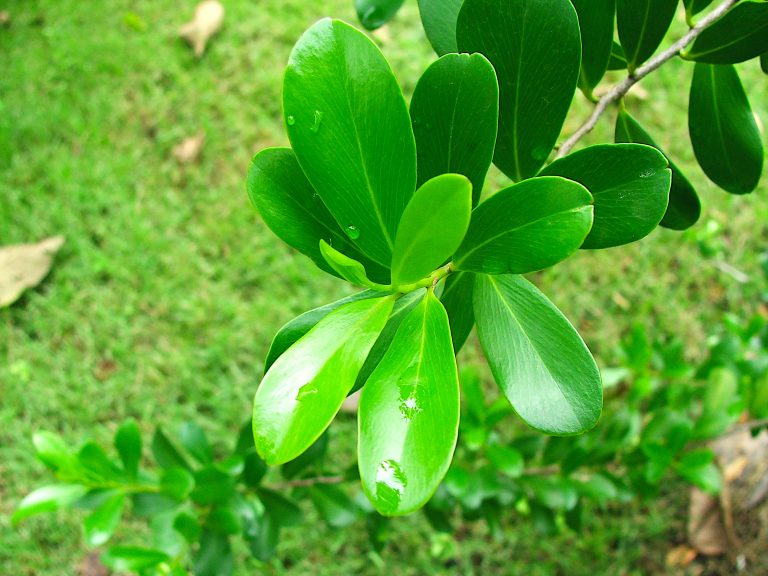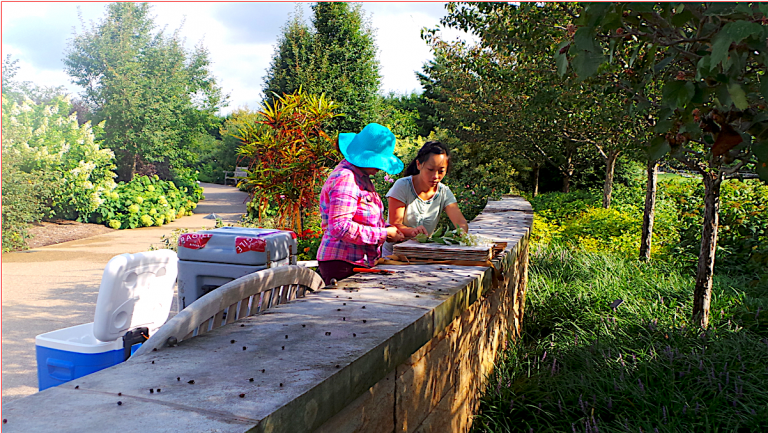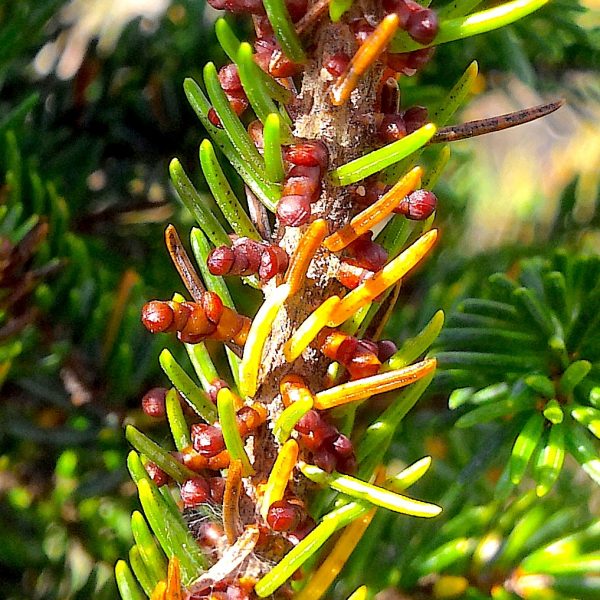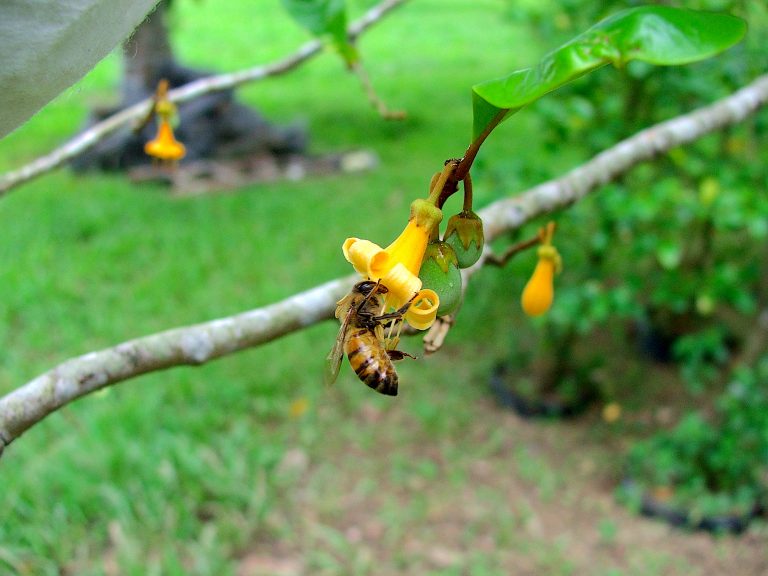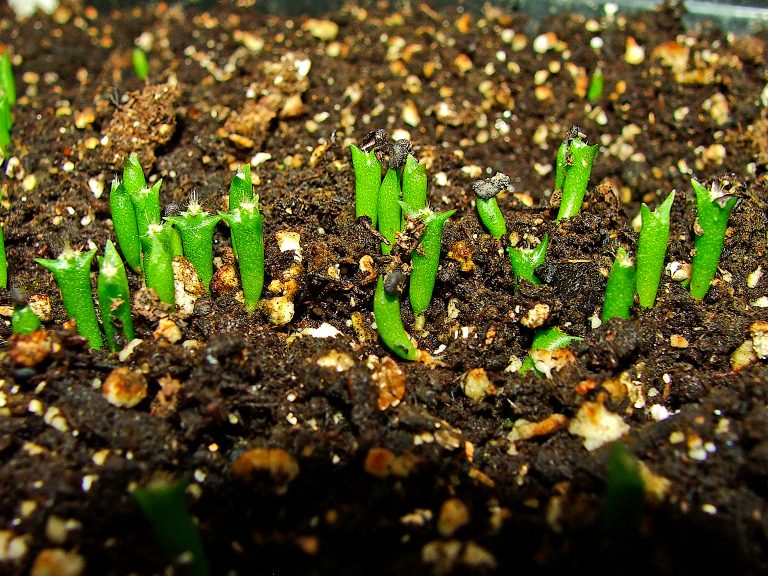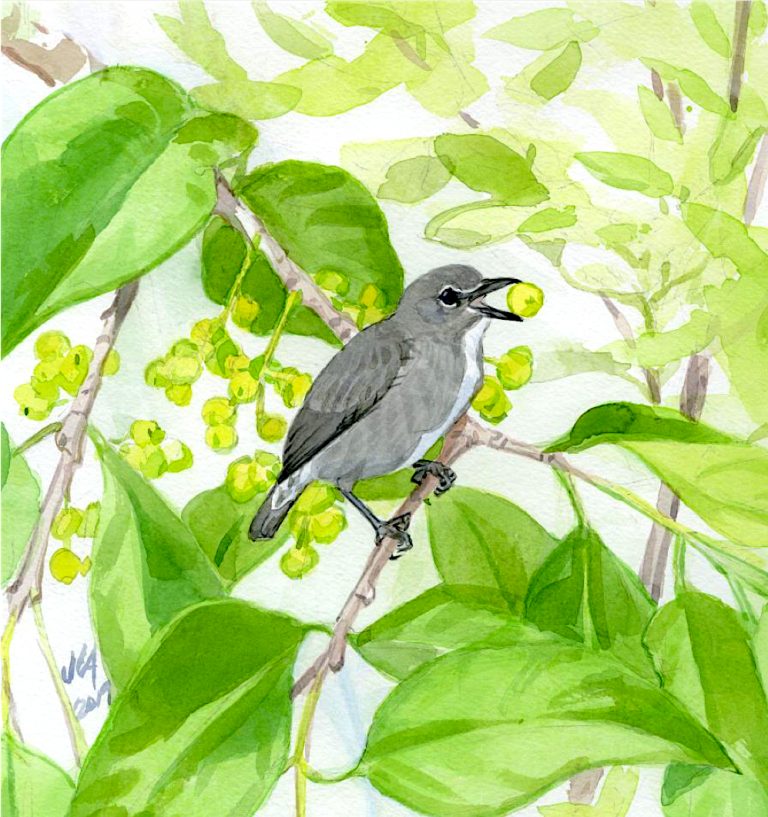PROJECTS
This section lists my current and previous research projects in botany, ecology, and natural history
Research Projects
Resolving the Taxonomy of Caribbean Mistletoes
The objectives of this project are to resolve the phylogenetic relationships and clarify the taxonomy of the endemic lineage of Caribbean mistletoes Dendropemon (Loranthaceae), including nomenclatural updates, a monographic treatment, and electronic identification keys.
Selected publications:
Caraballo-Ortiz M.A. and Carlo T.A. 2013. Resurrection of Dendropemon sintenisii (Loranthaceae): an endemic mistletoe from Puerto Rico. Phytotaxa 82(1): 1–6.
Chloroplast Evolution and Taxonomic Revision of Neotropical Mistletoes
This project focuses on studying the chloroplast structure of various lineages of neotropical mistletoes and to reconstruct phylogenetic relationships among genera and species.
Using combined molecular and morphological data, current taxonomic classification will be re-evaluated and updated.
Selected publications:
Caraballo-Ortiz M.A. and Acevedo-Rodríguez P. 2019. Clarifying the identity of the enigmatic mistletoe Cladocolea biflora (Loranthaceae). Harvard Papers in Botany 24(2): 119–120.
Canelón D.S., Niño S.M., Dorr L.J. and Caraballo-Ortiz M.A. 2020. Two new species of Dendrophthora (Viscaceae) from the Venezuelan Andes. PhytoKeys 140: 1–10.
Documenting the Biodiversity of Parasitic Plants from the Caribbean Islands
The focus of this long-term project is to prepare a taxonomic treatment covering all lineages of parasitic plants reported for the Caribbean region.
Other objectives are to prepare interactive keys to recognize species in the field and to compile information on their natural history and reproductive biology for educational and conservation purposes.
Although some species of parasitic plants in the Caribbean are widespread weeds (such as the Love Vine), there are others that are endemic to small islands and critically endangered.
Selected publications:
Honaas L., Caraballo-Ortiz M.A., McNeil J. and dePamphilis C.W. 2015. Cultivation of parasitic flower plants for research and teaching. AERGC Newsletter 27: 4–8.
Caraballo-Ortiz M.A. and Morales-Pérez A.L. 2018. A lost Caribbean mistletoe rediscovered: new record for Antidaphne wrightii (Santalaceae) in Puerto Rico. Journal of the Botanical Research Institute of Texas 12(2): 683–687.
Caraballo Ortiz M.A. 2019. Parasitic plants: important components of biodiversity. The Plant Press (Botany Department, Smithsonian Institution) 22(4): 1–3.
Floristic Studies in the West Indies
One of my long-term projects is to study the floristic diversity of the Caribbean islands, aiming to prepare a comprehensive taxonomic treatment for the region with interactive keys and images.
Several components of this project are in collaboration with regional and international botanists, including Dr. Pedro Acevedo (Smithsonian Institution), Dr. Jackeline Salazar (Dominican Republic), Agronomist William Cinea (Haiti), Mr. Eddy Martinez (Cuba), Mr. Alcides Morales (Puerto Rico), Dr. Fred Burton (Cayman Islands), and Mr. Keron Campbell (Jamaica).
Selected publications:
Caraballo-Ortiz M.A. and Carlo T.A. 2013. Resurrection of Dendropemon sintenisii (Loranthaceae): an endemic mistletoe from Puerto Rico. Phytotaxa 82(1): 1–6.
Caraballo-Ortiz M.A. and Trejo-Torres J.C. 2017. Two new endemic tree species from Puerto Rico: Pisonia horneae and Pisonia roqueae (Nyctaginaceae). PhytoKeys 86: 97–115.
Caraballo-Ortiz, M.A., Campbell, K.C.S.E. and Cross, S.J. 2021. A new Pisonia (Nyctaginaceae) from Jamaica, with an updated list of species in the genus and a key to the West Indian taxa. Journal of Plant Taxonomy and Geography (Webbia) 76(1): 53–63.
Updating the Flora of Puerto Rico
This long-term project aims to clarify the taxonomy of the flora of Puerto Rico, including new findings, documenting the urban flora such as cultivated and newly naturalized plants, and building interactive keys.
The project also involve the collaboration with biologists and conservation agencies to identify specimens, explore botanically important areas, and propagate endangered species.
Selected publications:
Trejo-Torres J.C., Caraballo-Ortiz M.A. and Marcano-Vega H. 2011. Handbook of rare plants from the northern karstic region of Puerto Rico [Compendio de Plantas Raras del Karso Norteño de Puerto Rico]. Final Research Report. International Institute of Tropical Forestry, United States Department of Agriculture–Forest Service and Ciudadanos del Karso, San Juan, Puerto Rico. 290 pp.
Caraballo-Ortiz M.A. 2013. Rediscovery of Arrabidaea chica (Bignoniaceae) and Entada polystachya var. polyphylla (Fabaceae) in Puerto Rico. Phytotaxa 125(1): 53–58.
Trejo-Torres J.C., Caraballo-Ortiz M.A., Vives-Heyliger M.A., Torres-Santana C.W., Cetzal-Ix W., Mercado-Díaz J.A. and Carlo T.A. 2014. Rediscovery of Eugenia fajardensis (Myrtaceae), a rare tree from the Puerto Rican Bank. Phytotaxa 191(1): 154–164.
Caraballo-Ortiz M.A. and Morales-Pérez A.L. 2018. A lost Caribbean mistletoe rediscovered: new record for Antidaphne wrightii (Santalaceae) in Puerto Rico. Journal of the Botanical Research Institute of Texas 12(2): 683–687.
Clarifying the Worldwide Diversity of Birdcatcher Trees
This collaborative project with Mr. Felipe Rossetto from Londrina State University, Brazil aims to uncovers the diversity of Pisonia Birdcatcher trees and related genera (tribe Pisonieae) in the Caribbean and across the globe.
Selected publications:
Caraballo-Ortiz M.A. and Trejo-Torres J.C. 2017. Two new endemic tree species from Puerto Rico: Pisonia horneae and Pisonia roqueae (Nyctaginaceae). PhytoKeys 86: 97–115.
Rossetto E.F.S. and Caraballo-Ortiz M.A. 2020. Splitting the Pisonia birdcatcher trees: reestablishment of Ceodes and Rockia (Nyctaginaceae: Pisonieae). PhytoKeys 152: 121–136.
Caraballo-Ortiz, M.A., Campbell, K.C.S.E. and Cross, S.J. 2021. A new Pisonia (Nyctaginaceae) from Jamaica, with an updated list of species in the genus and a key to the West Indian taxa. Journal of Plant Taxonomy and Geography (Webbia) 76(1): 53–63.
Studying the Evolution of Caribbean Slipper Spurges
In collaboration with Dr. Ivalú Cacho from the National Autonomous University of Mexico, we are studying the pollination biology and taxonomy of the succulent herbs Euphorbia tithymaloides (Euphorbiaceae), the only documented case of a ring species in plants.
Assessing the Diversity of Neotropical Wild Cinnamon Trees
This project, leaded by Dr. Jackeline Salazar (National Autonomous University of Santo Domingo and Grupo Jaragua, Dominican Republic), is focused on redefining the current genera of Wild Cinnamon Trees (Canellaceae) in tropical America, describing new species, and evaluating populations for conservation efforts.
Selected publications:
Salazar J., de Barros F. and Caraballo-Ortiz M.A. Two new species of Cinnamodendron (Canellaceae) from Brazil. Brittonia 72(4): 381–392.
Building a Tissue Bank for High-Throughput DNA and RNA Studies Using the Living Plant Collection from the Arboretum at Penn State University, Pennsylvania, USA
This long-term collaborative project with Dr. Claude dePamphilis and Dr. Uma Venkatesh from Penn State University aims to build a tissue bank for the living collection of The Arboretum at Penn State.
The herbarium specimens and the samples suitable for DNA and RNA extractions obtained from these living collections will allow scientists around the globe to perform a myriad of molecular and ecological comparative studies.
Rediscovering Three Rare Parasitic Plants from Pennsylvania, USA
In collaboration with Dr. Claude dePamphilis and Dr. Uma Venkatesh from Penn State University, we are assessing the population status of three native rare parasitic plants from Pennsylvania: the Leafy Mistletoe (Phoradendron leucarpum), the Dwarf Mistletoe (Arceuthobium pussilum), and the Indian Paintbrush (Castilleja coccinea).
Other objectives of this project include population genetic studies, develop information on best practices to propagate these plants, and to coordinate with local agencies the establishment of ex situ populations within the state.
Studies on the Structure and Evolution of Organelles
To examine the structure and genomic evolution of organelles, we apply genomic and bioinformatic tools to assemble, characterize and reconstruct chloroplasts and mitochondria from plants and other organisms using genomic data from high-throughput sequencing.
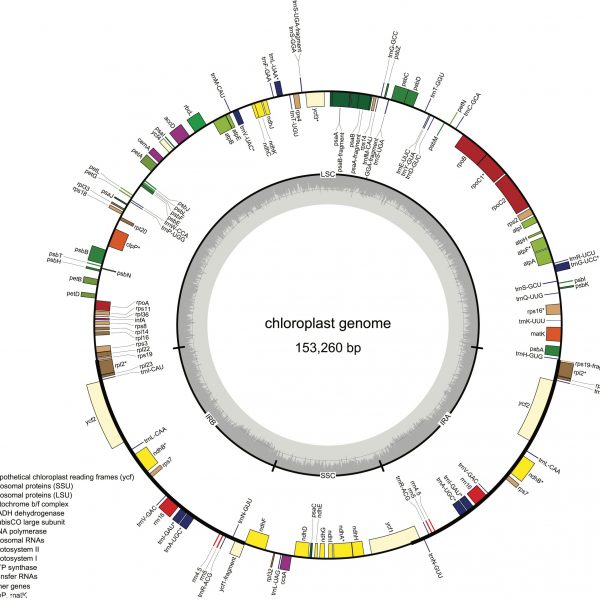
Selected publications:
Ren Z., Niu X., Lv T., Wang Y., Caraballo-Ortiz M.A. and Su X. 2018. The complete mitochondrial genome of Panthera pardus (Felidae: Pantheriinae), a first-class national-protected wild animal from China. Conservation Genetics Resources 11(4): 389–392.
Liang R., Caraballo-Ortiz M.A., Liu Y. and Su X. 2021. Characterization of the complete chloroplast genome of Meconopsis punicea (Papaveraceae), an endemic species from the Qinghai-Tibet Plateau in China. Cytology and Genetics 55(2):183–187.
Ecology of Mistletoes and Tropical Plants
I have participated in several projects focused on the ecology of forest dynamics, seed predation in tropical plants, and seed dispersal of mistletoes, many of them in collaboration with Dr. Tomás Carlo from Penn State University.
We conducted experimental seed plantings on several host trees with fruits dispersed by frugivorous birds and measure the survival and performance of mistletoe seedlings.
Mistletoes can grow well in more species of trees than is usually observed in nature, but their seeds do not usually arrive to them because birds decide where to “plant” them.
Instead, birds take mistletoe seeds to the trees they feed the most, and even when they are difficult hosts to get established, the high intensity of seeds received helps the mistletoe to get a chance to reach the right branch and thrive.
Selected publications:
Flynn D.F.B., Uriarte M., Crk T., Pascarella J.B., Zimmerman J.K., Aide T.M. and Caraballo-Ortiz M.A. 2010. Hurricane disturbance alters secondary forest recovery in Puerto Rico. Biotropica 42(2): 149–157.
Carlo T.A., Flores-Mangual M.L. and Caraballo-Ortiz M.A. 2013. Post-dispersal seed predation rates in a Puerto Rican pasture. Caribbean Journal of Science 47(2–3): 153–158.
Caraballo-Ortiz M.A., González-Castro A., Yang S., dePamphilis C.W. and Carlo T.A. 2017. Dissecting the contributions of dispersal and host properties to the local abundance of a tropical mistletoe. Journal of Ecology 105(6): 1657–1667.
Pollination Biology and Fecundity of the Caribbean Tree Goetzea elegans (Solanaceae)
This project was focused on Goetzea elegans, an endangered tree endemic to Puerto Rico and member of a basal lineage of the Nightshade family (Solanaceae).
This study, in collaboration with Dr. Eugenio Santiago (University of Puerto Rico-Río Piedras), explored two components: the species’s breeding system using cultivated plants, and the fecundity of the largest known wild population. In the first component, pollen crossings were performed to test for fruit set, seed number and seed viability.
Also, the pollination efficiency between a native bird (Coereba flaveola) and the introduced honey bees (Apis mellifera) was compared.
For the second component, I explored how the distance to the nearest flowering neighbor and nearby flowers in the community influenced the fruit production, seed number, and seedling viability of these rare trees.
Selected publications:
Caraballo Ortiz M.A. 2008. Biology and natural history of the Matabuey (Goetzea elegans), an endemic and endangered tree of Puerto Rico. In Joglar, R. (editor) Biodiversity of Puerto Rico: Agustín Stahl, Flora, Fungi. La Editorial, Universidad de Puerto Rico. pp. 175–178.
Caraballo-Ortiz M.A. and Santiago-Valentín E. 2011. The breeding system and effectiveness of introduced and native pollinators of the endangered tropical tree Goetzea elegans (Solanaceae). Journal of Pollination Ecology 4(4): 26–33.
Caraballo-Ortiz M.A., Santiago-Valentín E. and Carlo T.A. 2011. Flower number and distance to neighbours affect the fecundity of Goetzea elegans (Solanaceae). Journal of Tropical Ecology 27(5): 521–528.
Propagation of Plants for Conservation and Educational Purposes
This long-term project is a collaboration with Dr. Eugenio Santiago (Herbarium UPR of the Botanic Garden of the University of Puerto Rico), Agronomist Rafael Rivera (Conservation Trust of Puerto Rico), and other institutions and biologists.
The main focus of this project is the flora of Puerto Rico, where we locate native and rare plants in the field and monitor them to collect seeds. Scientific data such as germination time and growth media are recorded for each species.
Grown plants are then used for in situ and ex situ conservation efforts and habitat restoration projects, and some are planted in urban environments to test their performance.
Other projects include the cultivation of native parasitic plants such as Mistletoes for educational and conservation purposes.
Selected Publications:
Honaas L., Caraballo-Ortiz M.A., McNeil J. and dePamphilis C.W. 2015. Cultivation of parasitic flower plants for research and teaching. AERGC Newsletter 27: 4–8.
Collaborative Projects on Other Biological Fields
Other collaborative projects in which I have been involved include taxonomic and phylogenetic studies on paleobotany, phytochemistry, genetic structure, ornithology, and genomic analyses of viruses.
These studies include the description of a new species of fossilized Kauri tree from about 64 million years ago (Agathis immortalis), a new species of mistletoe-specialist bird from Borneo (the Spectacled Flowerpecker, Dicaeum dayakorum), and inferring the first genome and resolving the phylogeny of the SARS-CoV-2 coronavirus.
Selected publications:
Escapa I., Iglesias A., Wilf P., Catalano S., Caraballo-Ortiz M.A. and Cuneo N. 2018. Agathis trees of Patagonia’s Cretaceous-Paleogene death landscapes and their evolutionary significance. American Journal of Botany 105(8): 1345–1368.
Zhang Y., Harris A.J., Caraballo-Ortiz M.A., Ren Z. and Zhong Y. 2018. Genetic structure of the bacterial endosymbiont Buchnera aphidicola from its host aphid Schlechtendalia chinensis and evolutionary implications. Current Microbiology 75(3): 309–315.
Saucier J.R., Milensky C.M., Caraballo-Ortiz M.A., Ragai R., Dahlan N.F. and Edwards D.P. 2019. A distinctive new species of Flowerpecker (Passeriformes: Dicaeidae) from Borneo. Zootaxa 4686(4): 451–464.
Liu F., Ma Z., Caraballo-Ortiz M.A., Zhang H., Su X. and Liu Y. 2020. Chemical constituents of Pedicularis longiflora var. tubiformis (Orobanchaceae), a common hemiparasitic medicinal herb from the Qinghai Lake Basin, China. Phyton 89(3): 1–8.
Kumar, S., Tao Q., Weaver S., Sanderford M.D., Caraballo-Ortiz M.A., Sharma S., Pond S.L.K. and Miura S. 2021. An evolutionary portrait of the progenitor SARS-CoV-2 and its dominant offshoots in COVID-19 pandemic. Molecular Biology and Evolution msab118.
For a complete list of my scientific publications, please visit
Google Scholar or Research Gate
If interested in obtaining printed or electronic copies of these publications, please contact me
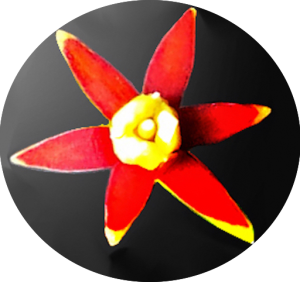
0
0
votes
Article Rating
Subscribe
0 Comments
Inline Feedbacks
View all comments
